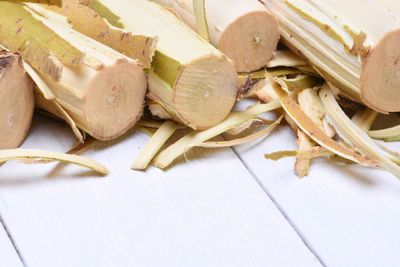Uses for Tree Bark
You may be wondering why you should consider harvesting tree bark. There are several interesting uses for tree bark, and any one of them can lead you to tree bark harvesting. One use is culinary. While some bark, like pine, is edible, none is particularly delicious. But if you are in a life-and-death situation and must find a source of food in the wild, pine bark will keep you alive. How to harvest pine bark? Cut a rectangle shape into the bark, then carefully peel off the hard outer bark. The edible inner bark is soft and slippery. Wash the inner bark, then fry or roast it. More people use tree bark for medicinal purposes rather than culinary. Different tree barks are used as remedies for different problems. The bark of the black willow (Salix nigra), for instance, is effective against pain and inflammation. It is also a powerful anti-inflammatory. Wild cherry (Prunus serotina) helps with a cough and is especially beneficial when you are treating a dry irritable cough after an infection. You can tincture it, or else make a cough syrup from it. On the other hand, the bark of white pine (Pinus strobus) is an expectorant and stimulates coughing. If you are troubled by spasms like menstrual cramps, use cramp bark or blackhaw bark. Both are considered strong medicine for cramps.
When to Start Tree Bark Harvesting
Folks who make herbal medicines know that you must harvest different parts of plants at different times. You harvest roots in fall or spring and leaves just before the plant flowers. Spring is also the ideal time to start gathering bark from a tree. Trees grow new bark between spring and summer. This is the time of year when the bark is just forming but has yet to harden onto the tree. That means it is not too difficult to start tree bark harvesting.
How to Harvest Tree Bark
The cardinal rule is not to kill the tree. Trees form the center of the ecosystem that surrounds them and removing one changes the entire forest area. When you are gathering bark from a tree, take care not to girdle the trunk – that is, don’t remove a section of bark all the way around the trunk. Girdling prevents water and sugars from getting from the ground to the leaves, essentially starving the tree to death. Before you begin harvesting bark, positively identify the tree species. Then remove a small branch no bigger than your arm by sawing it off just beyond the branch collar. Clean the branch, then cut it into pieces. Use a knife to shave down the length of the branch, removing long strips of cambium, the inner bark. Dry the inner bark by placing it in a single layer on a drying rack. Stir it regularly for a few days until it’s dry. Alternatively, you can make tinctures after you have finished harvesting tree bark. Disclaimer: The contents of this article are for educational and gardening purposes only. Before using ANY herb or plant for medicinal purposes, please consult a physician or a medical herbalist for advice.
